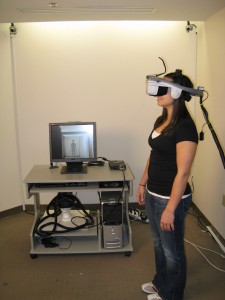This morning started off with another media-induced facepalm. Thanks to Owen Good at Kotaku for drawing this to our attention.
One of the downsides to being a scientist is having your work misrepresented in the media. It’s bad enough when you can tell they write a report or story based on another story that’s based on another story. Worse is when they bring in “experts” to sensationalize it (especially when they don’t bother contacting the actual researchers for an accurate statement.) Fox News aired a segment on my recently published study on the negative effects of sexualized avatars. Here is what is wrong about it.
1. They say we studied “young girls” and the discussion is around children. We studied female adults (none younger than 18), which is clearly noted in the article.
2. At another point, they say we studied “gamers.” Video game play varied among this sample; participants reported playing between 0 and 25 hours of games a week (M = 1.29, SD = 3.70). Also, they were not asked if they self-described as gamers.
3. Participants did not choose avatars for this study; they were randomly assigned to assure the validity of the manipulation. (Read this if you don’t understand the importance and implications of random assignment for experiments.) I am researching choice in other studies because there could be a self-selection bias in play when it comes to gaming (e.g., women who self-objectify may be more or less likely to choose sexualized avatars).
4. The simulation was not a video game. It was an interaction with objects in a fully immersive virtual environment and a social interaction with a male confederate represented by an avatar. Further research with gaming variables is necessary because those sorts of elements change outcomes in unexpected ways, as my grad student Mao Vang and I recently found when we had White participants play a game alongside Black avatars.
5. What is most wrong is that their “expert” is not a scientist or even a gaming researcher, but a self-described life coach. I looked her up and she has zero notes on her website about her scientific education or experience. Rather, it is a business site populated with slogans like “Let’s Get it, #Go and MAKE THAT DOUGH!” (Random hashtags, arbitrary capitalization, and outdated slang all preserved from the original.) There’s no indication that she knows anything about science, virtual environments or video games, or girls’/women’s development or psychology. It’s clear from her interview that she did not read the article–I love that Owen Good at Kotaku points out that she swipes lines from another journalist’s writeup at Time.
Perhaps the most egregious transgression is when she puts words in our mouths with this gem: “But they say that this is, like, even worse than watching Miley Cyrus twerk.” NO, WE DIDN’T SAY THAT. NOR WOULD WE. EVER. That statement was made by the Time reporter and was rightfully not attributed to us.
Such are the frustrations of the scientist.

